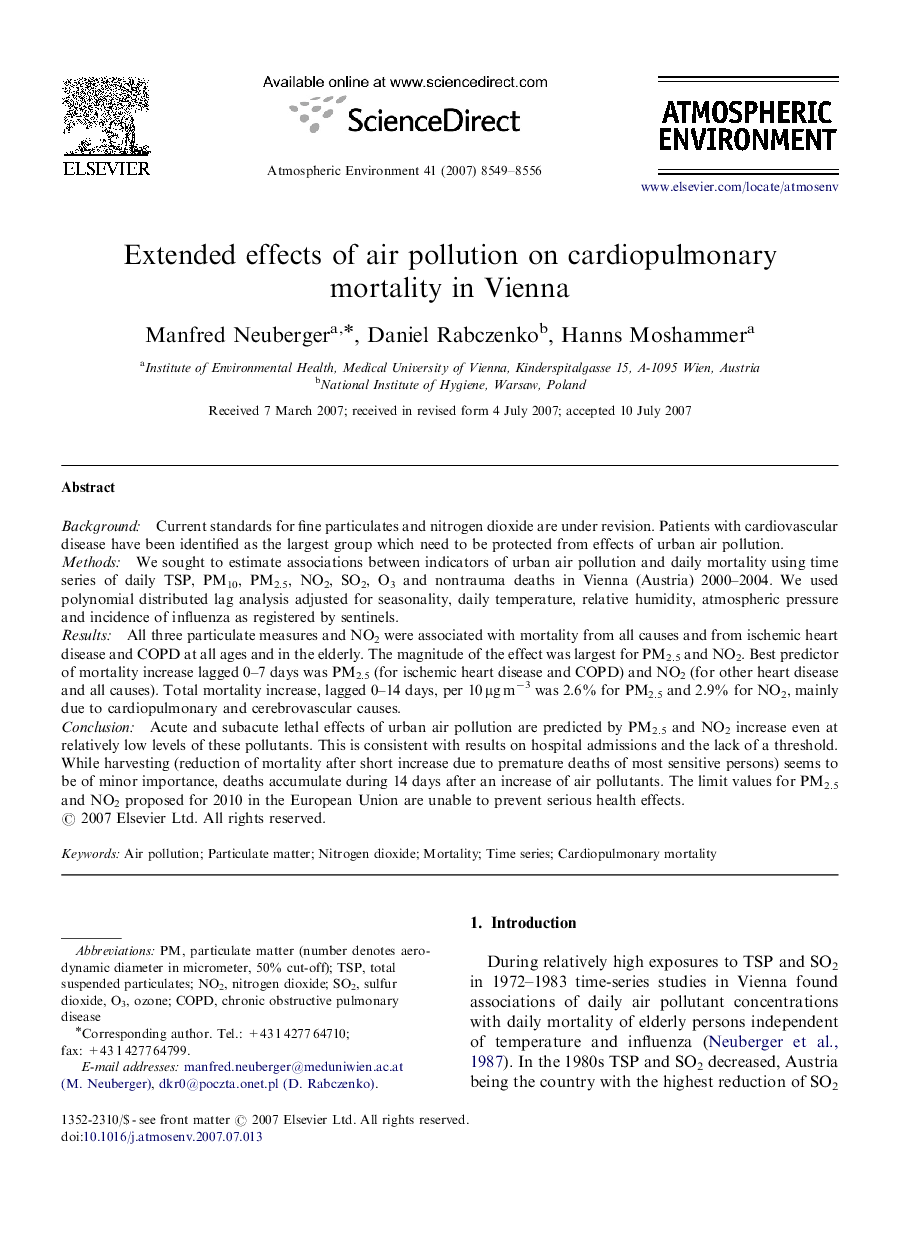| Article ID | Journal | Published Year | Pages | File Type |
|---|---|---|---|---|
| 4443015 | Atmospheric Environment | 2007 | 8 Pages |
BackgroundCurrent standards for fine particulates and nitrogen dioxide are under revision. Patients with cardiovascular disease have been identified as the largest group which need to be protected from effects of urban air pollution.MethodsWe sought to estimate associations between indicators of urban air pollution and daily mortality using time series of daily TSP, PM10, PM2.5, NO2, SO2, O3 and nontrauma deaths in Vienna (Austria) 2000–2004. We used polynomial distributed lag analysis adjusted for seasonality, daily temperature, relative humidity, atmospheric pressure and incidence of influenza as registered by sentinels.ResultsAll three particulate measures and NO2 were associated with mortality from all causes and from ischemic heart disease and COPD at all ages and in the elderly. The magnitude of the effect was largest for PM2.5 and NO2. Best predictor of mortality increase lagged 0–7 days was PM2.5 (for ischemic heart disease and COPD) and NO2 (for other heart disease and all causes). Total mortality increase, lagged 0–14 days, per 10 μg m−3 was 2.6% for PM2.5 and 2.9% for NO2, mainly due to cardiopulmonary and cerebrovascular causes.ConclusionAcute and subacute lethal effects of urban air pollution are predicted by PM2.5 and NO2 increase even at relatively low levels of these pollutants. This is consistent with results on hospital admissions and the lack of a threshold. While harvesting (reduction of mortality after short increase due to premature deaths of most sensitive persons) seems to be of minor importance, deaths accumulate during 14 days after an increase of air pollutants. The limit values for PM2.5 and NO2 proposed for 2010 in the European Union are unable to prevent serious health effects.
